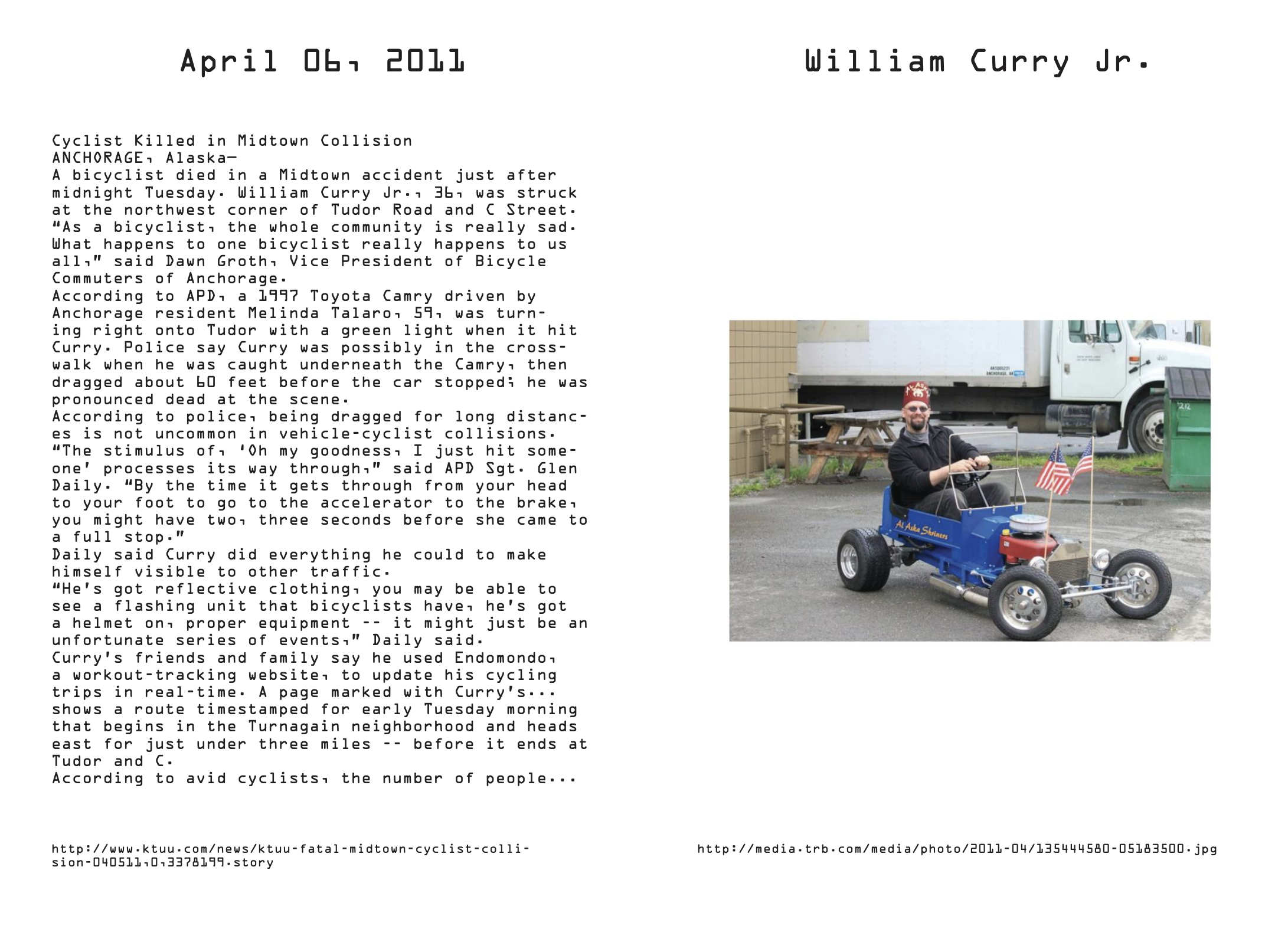I Died Yesterday
About This Project
WEB ART
BOOK
I Died Yesterday was a daily posting of someone who died, the previous day, beginning March 27 2011 and lasting for one year. It was hosted on the domain www.idiedyesterday.com which is now (as of 2020) hosting a site advertising a book about the afterlife.

The Website
I Died Yesterday initially existed as a web-based archive of individuals who had passed away the previous day. The website consisted of a single page where a picture of the deceased was presented for the duration of the day after their death. Clicking on the photo would take the viewer to an article about the individual, but no other navigation – to previous days’ deceased – was possible.
Daily updates were performed for one year.
The site existed at the address www.idiedyesterday.com, and was also presented on the site STUFFINABLANK, an internet-based platform conceived to hold online exhibitions of contemporary art run by Pedro Torres (the link to STUFFINABLANK now just redirects to his website).
The Book
Over the course of the year all URLs to both the photos used and articles linked to were recorded in a database. Following the completion of the project one year was allowed to elapse, and then, using this database, all the URLs were reaccessed on March 26, 2013, and taken out of the digital realm via the creation of a book.
In the book each day is given a spread; on one side appears the photo of the deceased, and on the facing page the article that the photo was linked to. Unsurprisingly, however, many of the reaccessed links were no longer active. For the images and web pages with broken links the error messages that appeared are printed in place of the photo or text elements.
The objective of the book is an examination of our mistaken conception of digital permanence. As the broken links scattered throughout this book attest, the digital realm is subject to its own laws of precarity. Nothing is supposed to be as permanent as one’s final burial marker – yet these virtual online “tombstones” disappear at rapid rates; falling victim to the vagaries of abandoned websites, shoddy upgrades, broken links and unknown servers in indeterminate locations.
Displaying this phenomenon of digital erosion within the confines of the physical materiality of a traditional book serves as a method of underlining the danger of assumptions of digital infallibility, while at the same time underscoring the continued relevance of traditional modes of information storage and transmission.
Book on Issuu (Limited to the first 499 Pages)


